

Catch Fish with
Mike Ladle
Information Page
SEA FISHING
For anyone unfamiliar with the site always check the FRESHWATER, SALTWATER and TACK-TICS pages. The Saltwater page now extends back as a record of over several years of (mostly) sea fishing and may be a useful guide as to when to fish. The Freshwater stuff is also up to date now. I keep adding to both. These pages are effectively my diary and the latest will usually be about fishing in the previous day or two. As you see I also add the odd piece from my friends and correspondents if I've not been doing much. The Tactics pages which are chiefly 'how I do it' plus a bit of science are also updated regularly and (I think) worth a read (the earlier ones are mostly tackle and 'how to do it' stuff).
The longest day!
I like the hot sunny weather but it has two real downsides when it comes to fishing. Firstly, it often means a long, laborious trek in chesties and although it is sometimes possible to walk to distant marks in shorts and light shoes, this is the exception. Usually it's a matter of sweating it out and trying to cool off by standing waist deep in the sea when you arrive at your chosen mark. The second, and to me more awkward problem is that to catch the first light it may be necessary to arrive on the shore by about 03:30 in the morning and at the other end of the day it doesn't get dark until ten o'clock at night. On my local beaches the high water of spring tides falls in the evening or the early morning so there's nothing for it but a long stay or a very early start. To be honest I am a morning person and I prefer the latter.
This morning was the first decent tide of the present series. My pal Bill had told me that there was weed on the beach, so I set the alarm for 02:45, gritted my teeth and went to bed. It was dark when I arrived on the shore and at that time of day it's not too warm so, picking my way over the rocks in the light of my headlamp, I trudged along for a mile or so until I reached a big weed midden. It was still pretty dark so I started with the spinning rod. For fifteen minutes I cast and retrieved with a whitish EvoStix lure. At first there was nothing at all then as the light began to increase I felt a couple of gentle nudges. "Schoolies" I thought and I changed to an Evo Redgill in the hope that the exposed hook would pick up a fish. Just more useless taps - all extremely close in and then I noticed one or two small swirls only inches out from where I stood. I walked back to the bag and picked up the fly rod. The cast was armed with a white Delta plastic eel (perhaps more appropriate for the apparent size of fish present) so I began to cast and retrieve. There was no need for distance as I could now see that the feeding bass were mostly at very close range. The slight cross wind made it a little more difficult than I would prefer but again I had a couple of gentle plucks on the lure. After a few minutes I had a firm pull and hooked a fish which wriggled a few times before coming unstuck.
I reeled in to examine my 'fly' and I noticed that there was a small shot nipped on the cast just above the eye of the hook. I decided that it was probably sinking too deeply so I removed the weight and cast again. Almost immediately I was into a fish and it went like a train. In one more or less continuous run it took the entire fly line and then it seemed to be exhausted and I was able to play it back to the shore without too much trouble. As I expected it was a bass but to my surprise it was relatively small, certainly no more than two-and-a-half pounds. Still, at least it was a fish. I pressed on and every few minutes I would get a bite. In not much more than an hour of action I landed four bass and then a nice mullet. Apart from one foul-hooked bass all the fish had the little eel firmly inside their mouths and every one put up a good old battle before I could beach it. The most exciting specimen was a good mullet which leapt into the air no less than six times in succession before shaking free of the hook. Jumping mullet are a very rare phenomenon down here so I can only assume that it was hooked in a ticklish spot on its anatomy.
Just one interesting comment and something I've noticed before. When I could first see the fish feeding they were almost entirely bass and as time passed the proportion of surface skimming mullet increased. This fitted in with the pattern of the fish I hooked. With fish caught, fish missed and fish lost it was pretty much continuous action so it's fingers crossed for some bigger stuff soon. This reminds me that I really do need a new fly reel, the old Okuma has now just about rerached the end of its useful life. Oh, and one other thing worth mentioning. I had changed the hooks in my Delta to stainless versions which have a turned in point. I got the impression that I failed to hook more fish than I should so I've just straightened the points to be parallel to the shank in the hope that it might improve matters in future.
My first bass on the fly - it fought well above its size.
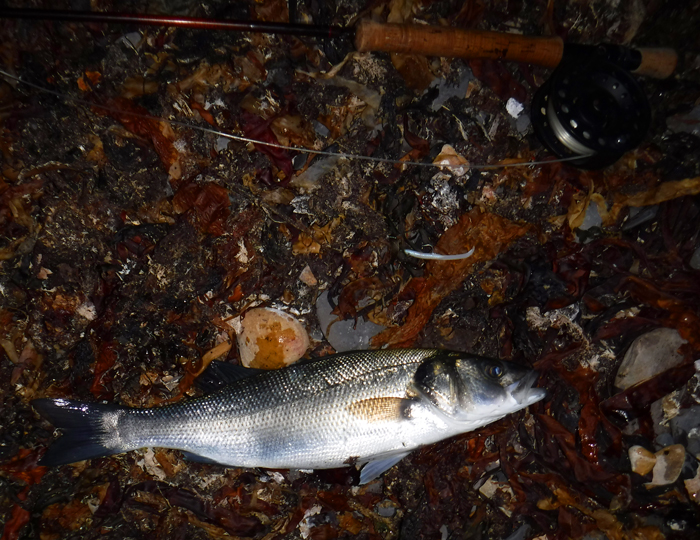
One of the better bass.
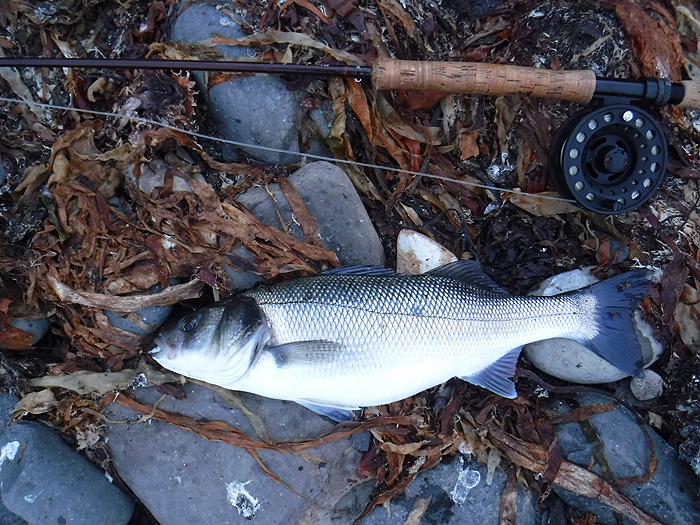
This one really wanted the plastic eel.
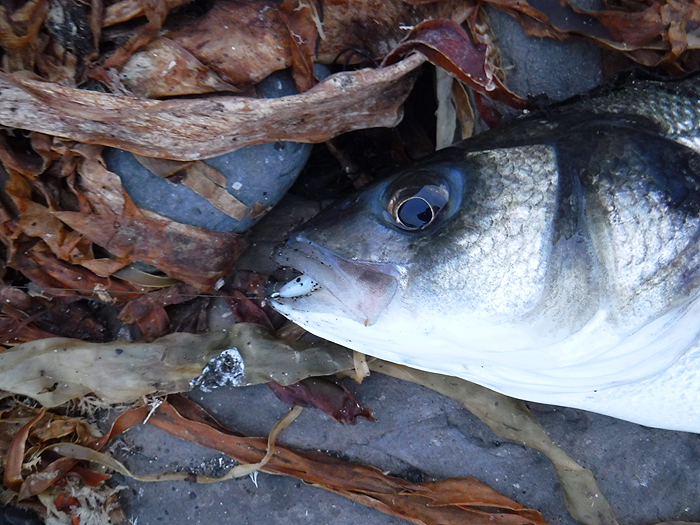
My mullet - no monster but always a desirable catch.
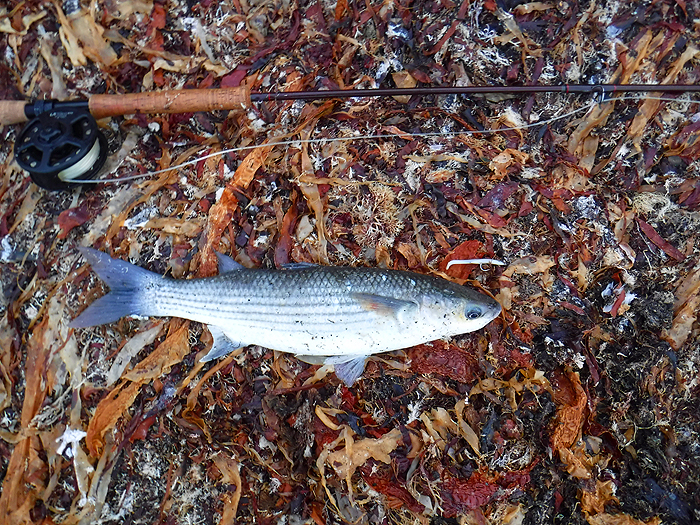
I might have had more mullet using a maggot fly?
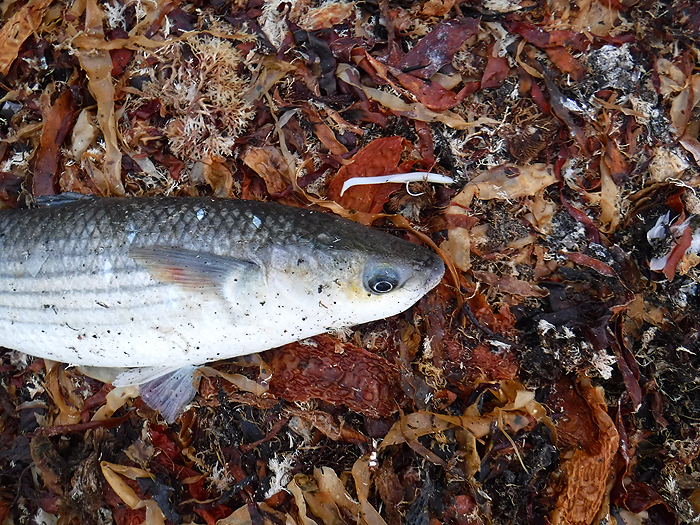
– PLEASE TELL YOUR TWITTER, FACEBOOK, EMAIL FRIENDS ABOUT THESE BOOKS.
BRAND NEW BOOK
"Fishing for Ghosts - Successful Mullet Angling"
written with David Rigden IT'S AVAILABLE FROM -ALSO THE NEW BOOK
“The Second Wave”
Written with Steve Pitts this is a SEQUEL TO THE BESTSELLER "Operation Sea Angler" IT'S AVAILABLE ON PAPER OR FOR YOUR KINDLE FROM -If you have any comments or questions about fish, methods, tactics or 'what have you!' get in touch with me by sending an E-MAIL to - docladle@hotmail.com